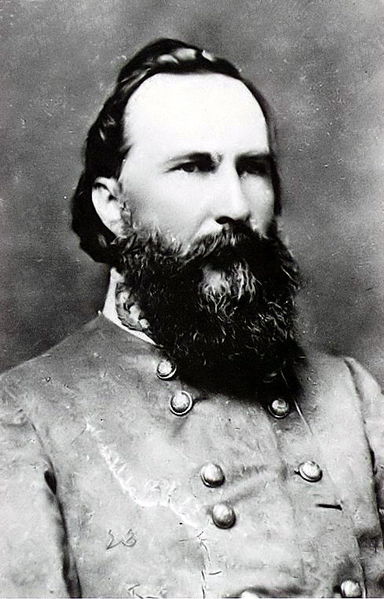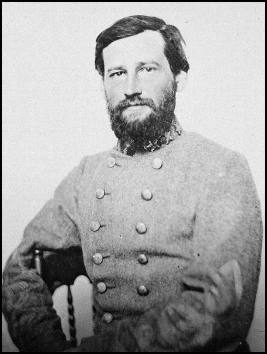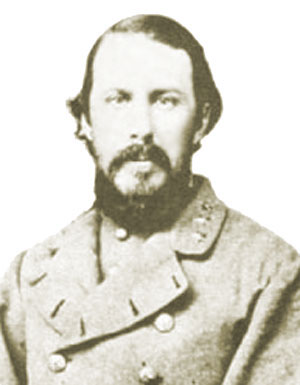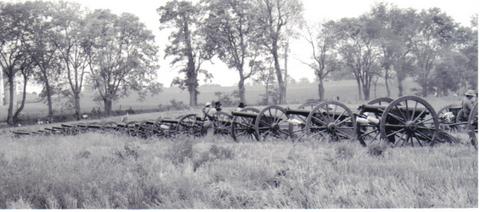Brooks Artillery
A.K.A. Fickling’s, Rhett’s, Elliot's, Brook’s Light Artillery
This unit was formed during the winter of 1861 and 1862 from Co. K, "Brooks Guards", of the 2nd South Carolina Infantry Regiment, (see below). The men came from Charleston and the Pickens Districts. On October 17, 1862, 61 members of this company transferred to organize an artillery battery under Captain Andrew Burnett Rhett. He resigned his infantry commission at regimental reorganization May 13, 1862 to become captain of Rhett's Battery, later known as Fickling's Artillery. The name Brooks originally came from the name of Co. K "Brooks Guards".
It was originally armed with two 6-lb. Smoothbores, one 12-lb. Napoleon, and one 12-lb. Howitzer.
2nd MANASSAS, (2nd Bull Run) ~ August 28-30, 1862 (News Report)
At Manassas Plains they were designated Reserve Artillery, Longstreet's Command, Col. Stephen D. Lee, Commanding. The Reserve Artillery consisted of Brooks Battery along with five Virginia batteries.
Brooks Battery was commanded by Capt. A. B. Rhett and armed with two 6-lb. Smoothbores and 2 12-lb. Howitzers.
At Sharpesburg they were designated Reserve Artillery, Longstreet's Command, Col. Stephen D. Lee, Commanding. The Reserve Artillery consisted of Brooks Battery along with five Virginia batteries and one Louisana battery.
Brooks Battery was commanded by Lt. William Elliott and armed with 2 10-lb. Parrotts and 2 12-lb. Howitzers.

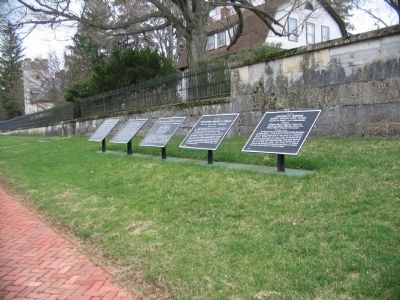 Site Marker 1 at Antietam Battlefield National Park" 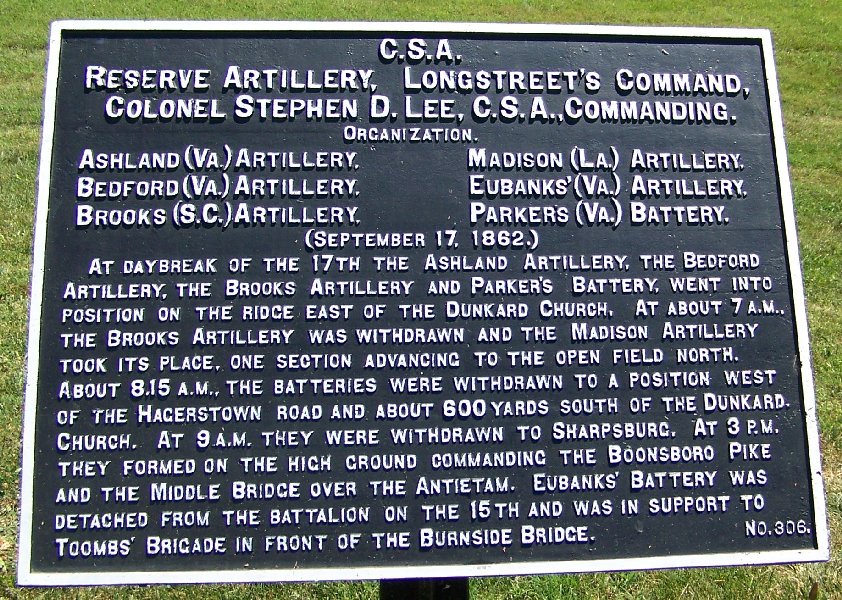
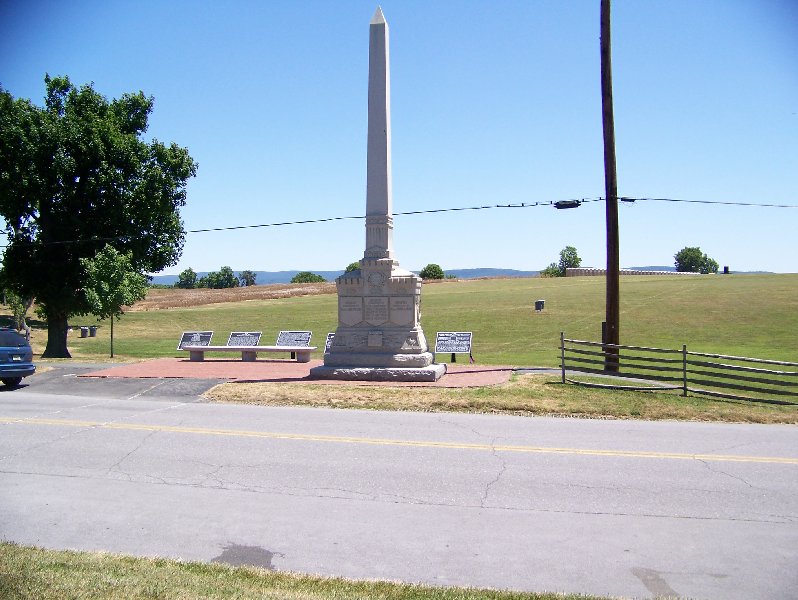 Site Marker 2 at Antietam Battlefield National Park" ~ Click for a larger image ~ FREDERICKSBURG ~ December 1-4, 1862 Attached to Col. Edward Porter Alexander Artillery, Brooks (Rhett's) was deployed in defense of Marye's Heights. This artillery action proved to be the decisive factor in the Confederate victory. Gen. Longstreet had been assured by Alexander, "A chicken could not live on that field when we open on it." 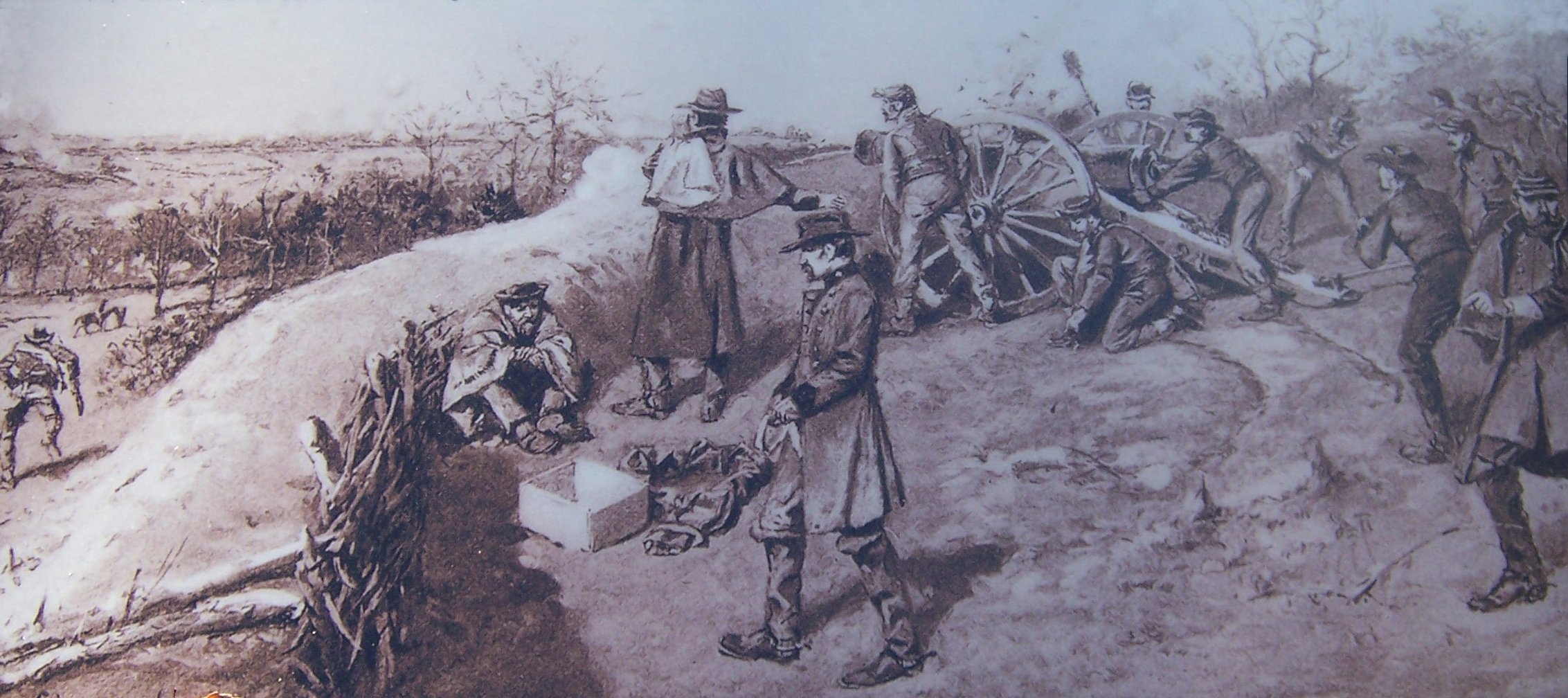
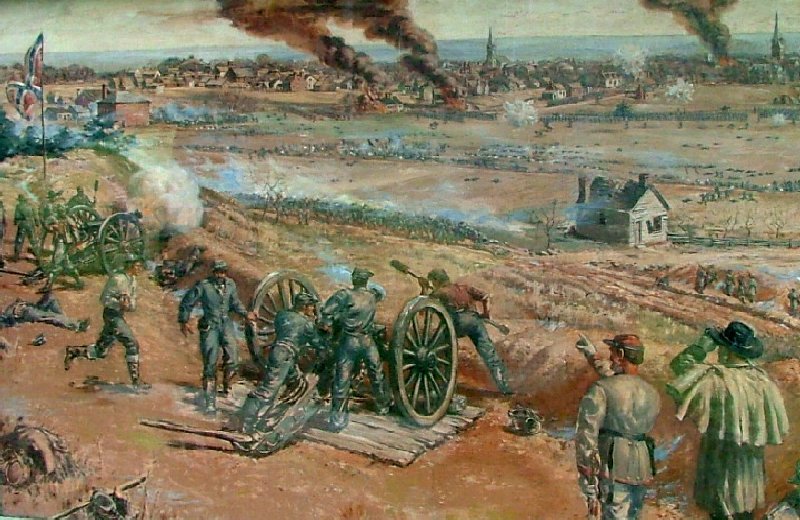
Brooks Battery on Lee's Hill GETTYSBURG ~ July 1-4, 1863 (Deaths)
July 1, 1863, at Gettysburg, Brooks Artillery was a part of the Army of Northern Virginia,
Longstreet's Corps Artillery Reserve,
E.P. Alexander's Battalion of Artillery, Brooks Battery, was commanded by Lt. S. Capers Gilbert and armed
and armed with four 12-lb. Howitzers
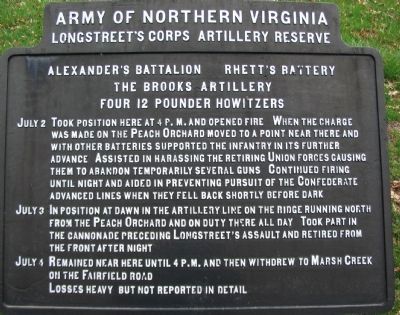
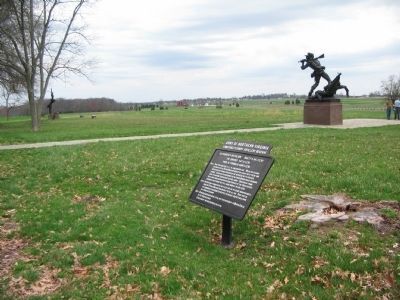 Site Marker at Gettysburg Battlefield National Park ~ Click for a larger image ~
After Gettysburg the unit was ordered to Georgia with Longstreet. It did not arrive in time to take part in the Battle of Chickamauga but was involved in the Knoxville operations. During the spring of 1864, it returned to Virginia.
At The Wildeness, they were designated Reserve Artillery under Lt. Gen. Longstreet's Command, Brig. Gen. Edwarward Porter Alexander, Commanding. The Reserve Artillery consisted of Brooks Battery along with five Virginia batteries and one Louisana battery. Brooks Battery was commanded by Lt. Frank Huger and armed with 4 12-lb. Howitzers. The artillery, got orders to move about noon on May 4, 1864, being in camp near Mechanicsville, some four or five miles west of Gordonsville.
At Spotsylvania Court House, they were again designated Reserve Artillery under Lt. Gen. Longstreet, Brig. Gen. Edwarward Porter Alexander, Commanding. The Reserve Artillery consisted of Brooks Battery along with four Virginia batteries and one Louisana battery. Brooks Battery was commanded by Lt. Frank Huger and Maj. Tyler C. Jordan.
At Cold Harbor, they were again designated Reserve Artillery under Lt. Gen. Longstreet, Brig. Gen. Edwarward Porter Alexander, Commanding. The Reserve Artillery consisted of Brooks Battery along with four Virginia batteries and one Louisana battery. Brooks Battery was commanded by Lt. Frank Huger and Maj. Tyler C. Jordan.
BATTLES: Seven Days Battles VA (25 JUN - 1 JUL 1862) Beaver Dam Creek VA (27 JUN 1862) White Oak Swamp VA (30 JUN 1862) 2nd Bull Run VA (28 - 30 AUG 1862) Sharpsburg PA (15-17 SEP 1862) Fredericksburg VA (13 DEC 1862) Chancellorsville VA (1-4 MAY 1863) Gettysburg PA (1-3 JUL 1863) Chickamauga GA (19-20 SEP 1863) Chattanooga Siege GA (SEP - NOV 1863) Knoxville Siege GA (NOV - DEC 1863) The Wilderness VA (5 - 6 MAY 1864) Spotsylvania Court House VA (8 - 21 MAY 1864) North Anna VA (23 - 26 MAY 1864) Cold Harbor VA (1 - 3 JUN 1864) OFFICERS: Rhett, A. Burnet - Captain Fickling, W. W. - Captain Lt. William Elliott Lt. S. Capers Gilbert
The 2nd South Carolina participated in as many, if not more, battles than any other regiment on either side. It is one of the few units that was established before the bombardment of Fort Sumter and existed until several weeks after Lee's surrender at Appomattox. It established itself as one of the elite shock troop units of Robert E. Lee's Army of Northern Virginia. Two officers, Joseph Kershaw and John Kennedy, became generals and one man, Richard R. Kirkland became one of the most famous "common soldiers" of the war for his humanitarian efforts at Fredericksburg.
|


